The Leyland Olympian is a rear-engined, high-floor double-decker city bus built by Leyland Bus between 1980 and 1993. The bus is popular in the United Kingdom, and large numbers were also exported to Hong Kong and Singapore.
Singapore Bus Service (SBS) acquired 400 of these buses delivered between 1986 and 1994, with bodywork supplied by Walter Alexander Coachbuilders of Scotland. The model continued operating with SBS Transit after the company’s rebranding and all units were retired by 2013. In addition, a demonstrator unit was deployed from 1981 to 1982 that was subsequently returned to the manufacturer.
Design:
The Leyland Olympian chassis was developed from the Leyland Titan integral double deck bus, but intended for bodying by other manufacturers, as was popular at the time.
Unveiled in 1980, it initially succeeded the Bristol VRT double-deck chassis (Bristol Commercial Vehicles merged with Leyland in 1965) and was initially available over a two-axle chassis at 9.6m and 10.3m lengths, with the 11m length offered later. It later succeeded the Leyland Fleetline, Leyland Atlantean and Leyland Titan as their productions runs ended in the mid-1980s.
Leyland also built a three-axle variant aimed at the export market at 10.4m, 11.3m and 12m lengths. These were very popular with bus operators in Hong Kong and Singapore, most notably Kowloon Motor Bus of Hong Kong, which procured over 900 of these buses.
Production of the bus continued after Leyland’s purchase by Volvo in 1988 owing to the huge number of existing orders. The production lines were finally closed in 1993 after final deliveries to Strathclyde Buses, Dublin Bus, China Motor Bus, Citybus and Singapore Bus Services. The last Leyland Olympian ever built was delivered to SBS and registered SBS9168S, later returned to England in 2013 where it is preserved by bus enthusiasts.
The Volvo Olympian succeeded the Leyland Olympian. While retaining the chassis design and layout, many improvements were made over its predecessor, including the use of power steering, improved electrical systems, and uses Volvo’s Z-cam brake system developed for trucks. Passive steering was also offered for the middle axle for better cornering. The dashboard layout was also standardised with other Volvo models.
SBS Transit:
Singapore Bus Services ordered a total of 200 non-air-conditioned, two-axle Leyland Olympian buses (10.4 metres) between 1986 and 1988, as well as 200 air-conditioned, 3-axle Leyland Olympian buses (12 metres) between 1993 and 1994. These buses were introduced years after their previous-acquired Leyland Atlantean double-deck buses.
SBS Transit Leyland (B45) Olympian 10.4m Demonstrator – Alexander R bodywork
A pre-production Leyland Olympian chassis was bodied by Alexander, built to SBS specifications and intended for demonstration in Singapore. Its chassis designation – a Leyland B45 – is a reference to Leyland’s B45 project to develop the Olympian chassis.
The bus was exhibited brand-new at the 1980 Commercial Motor Show in the UK and described as a ‘far-eastern prototype’. At the show, the bus featured 3+2 transverse seating not normally used in Singapore, but commonly found in Hong Kong at the time, with a seating capacity of 97. The bus was later refitted with 2+2 transverse seating at a reduced overall seating capacity of 84 and entered service with Singapore Bus Services in May 1981, registered as SBS5396B.
Originally allocated to Ang Mo Kio Depot and operating on Service 162, the bus was returned to Leyland in late 1982 and remained in the United Kingdom for a while before being sold in 1986, refurbished and eventually put into service with the City of Oxford Motor Services as a Park & Ride bus, registered PWL999W.
SBS Leyland Olympian 2-axle 10.4m – Alexander R bodywork
Singapore Bus Services (SBS) took delivery of 200 non-air-conditioned 10.4m Leyland Olympians with the R-type bodywork produced by Walter Alexander. They were registered between 19 November 1986 and 1 March 1988, as SBS3550K – SBS3571A, SBS6907X – SBS6999E, and SBS7113M – SBS7197X.
| Basic Technical Specifications | |
| Engine | Leyland TL11, 11093 cc |
| Transmission | Leyland Hydracyclic gearbox, five-speed automatic Allison gearbox (refitted), model/number unknown |
| Bodywork | Walter Alexander R-type Bodywork Complete Knock-Down (CKD) kits supplied by Walter Alexander Coachbuilders of Scotland and assembled locally by SBS Engineering Pte Ltd and Soon Chow Workshop |
| Capacity | 51 Upper + 32 Lower + 6 Standing = 89 total (Design) 51 Upper + 24 Lower + 22 Standing = 97 total (Modified) |
The Leyland Olympian 2-axle is the last of three bus chassis models bodied with the distinctive Alexander R-type Bodywork, the first two being the final batch of Leyland Atlantean (202 units) and the Mercedes-Benz O305 (200 units + 1 prototype). On the exterior, their only differences lie in manufacturer badging and placements of grilles and compartments. Registration numbers were split into multiple sequences, as was common at the time, but were the last batch of buses to do so as subsequent bus orders were registered in continuous numerical order.
Some buses received an increased seating capacity where four rows of two-abreast seats were removed in favour of a standing area. Additionally, some buses were later modified with Allison transmission units, but the exact transmission model and the number of units replaced remain unknown.
All units were retired by 2003, at the end of their extended 17-year statutory lifespan plus a 2-year extension.
Post-retirement:
A Leyland Olympian 2 axle (formerly registered SBS7196Z) was converted into a gym/playground bus for children known as Bobbie the Gymbus, bearing the registration plate YL8508R. The bus was relegated to static display in Pat’s Schoolhouse (Jubilee Park) kindergarten. Despite the interior modifications, the exterior remains near intact.
In March 2020, with the closure of the Jubilee Park kindergarten, the bus was moved to Pat’s Schoolhouse Katong at 26 Still Road South. However, the bus sustained damage to the roof during the towing operation. The bus was later scrapped in March 2025.
Another Leyland Olympian 2 axle sits outside the National Youth Council along Grange Road. Dubbed the ‘Qbuzz’, it was converted into an office.
SBS Leyland Olympian 3-axle 12m
Singapore Bus Services (SBS) took delivery of 200 air-conditioned 12-metre Leyland Olympian 3-axle buses between 1993 and 1994. They were bodied with the Royale bodywork produced by Walter Alexander, and registered between 27 August 1993 and 27 April 1994, as SBS9000S – SBS9199C. These were SBS’ first air-conditioned double-deck buses.
| Basic Technical Specifications | |
| Engine | Cummins LT10-B252, 10014 cc Power/torque rating of 252 hp (188 kW) @ 1900 rpm / 1082 Nm @ 1300 rpm |
| Transmission | ZF Ecomat 4HP 500 gearbox, four-speed automatic |
| Bodywork | Walter Alexander Royale Bodywork Complete Knock-Down (CKD) kits supplied by Walter Alexander Coachbuilders of Scotland. One unit assembled in the UK, rest assembled locally by SBS Engineering Pte Ltd and Soon Chow Workshop |
| Capacity | 51 Upper + 38 Lower + 38 Standing = 131 total (Design) |
| Others | Deans doors, Denso or Sutrak air-conditioning |
These buses were branded the “Superbus” by SBS owing to their large size as well as air-conditioning, representing a new era of air-conditioned tri-axle double-deck buses that would become prevalent in the Singapore bus fleet. The Cummins engine was opted for, and paired with a four-speed ZF transmission. In addition to the driving axles at the rear, which are fitted with double wheels, a third axle was added just forward of the rear driving axles and fitted with single wheels. Also referred to as a ‘tag axle’, it was also fitted with a passive steering function to facilitate sharp turns while reducing ‘tyre screech’ commonly associated with tri-axle buses without the feature.
The bus featured an all-new Royale bodywork produced by Walter Alexander with changes mainly in the frontal appearance. Its distinct curved appearance was possible using curved glass for the upper and lower deck windscreens. The rest of the bus was designed similar to the older R-type, but with insulating material between body panels and double-glazed windows fitted (except the curved glass windscreens) to retain cool interior temperatures. Walter Alexander delivered a fully-assembled bus from its Falkirk plant (SBS9000S), as well as a skeletal frame for another bus, to Singapore as a template for the SBS assembly works at Hougang Bus Depot.
SBS’ Leyland Olympian 3-axle buses were also the last Leyland Olympian bus orders fulfilled, rolling off the production line just before production of all Leyland buses ceased in 1993. The very last chassis produced (chassis number ON21080) was registered as SBS9168S.
Unlike the older Leyland Olympian 2-axle, or later Volvo Olympian 2-axle and 3-axle buses, the Layland Olympian 3-axle buses did not have lower deck seats removed in favour of a standing area. All units were retired by 2013, at the end of their extended 17-year statutory lifespan plus a 2-year extension.
Post-retirement:
With significant value to the local bus manufacturing heritage, the last Leyland chassis ever produced (SBS9168S) was repatriated back to the United Kingdom and preserved by local bus enthusiast Dave Rogers. It is registered in the UK as L888 SBS.
Gallery:
External Links & References:
- Leyland Olympian – Wikpedia
- PWL999W (Ex. SBS5396B)- The Oxford & Chiltern Bus Page
- Specification of Former Buses – SGWiki
- Leyland Olympian 3-axle – SGBuses
- Leyland Olympian – Bus Lists On The Web
Back to Bus Models
Back to Bus Articles
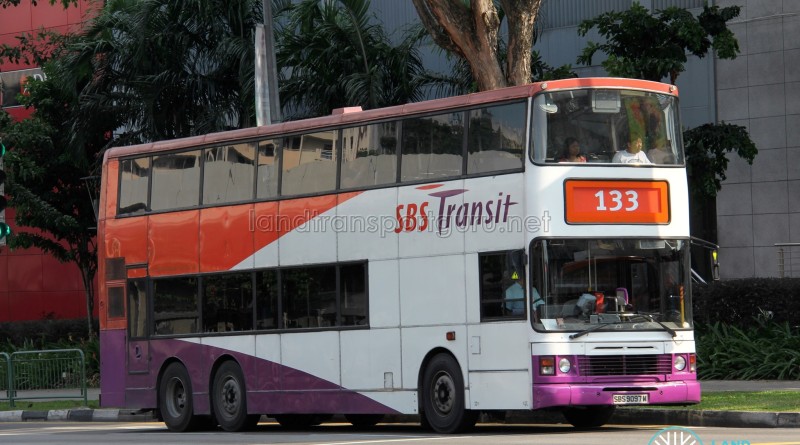
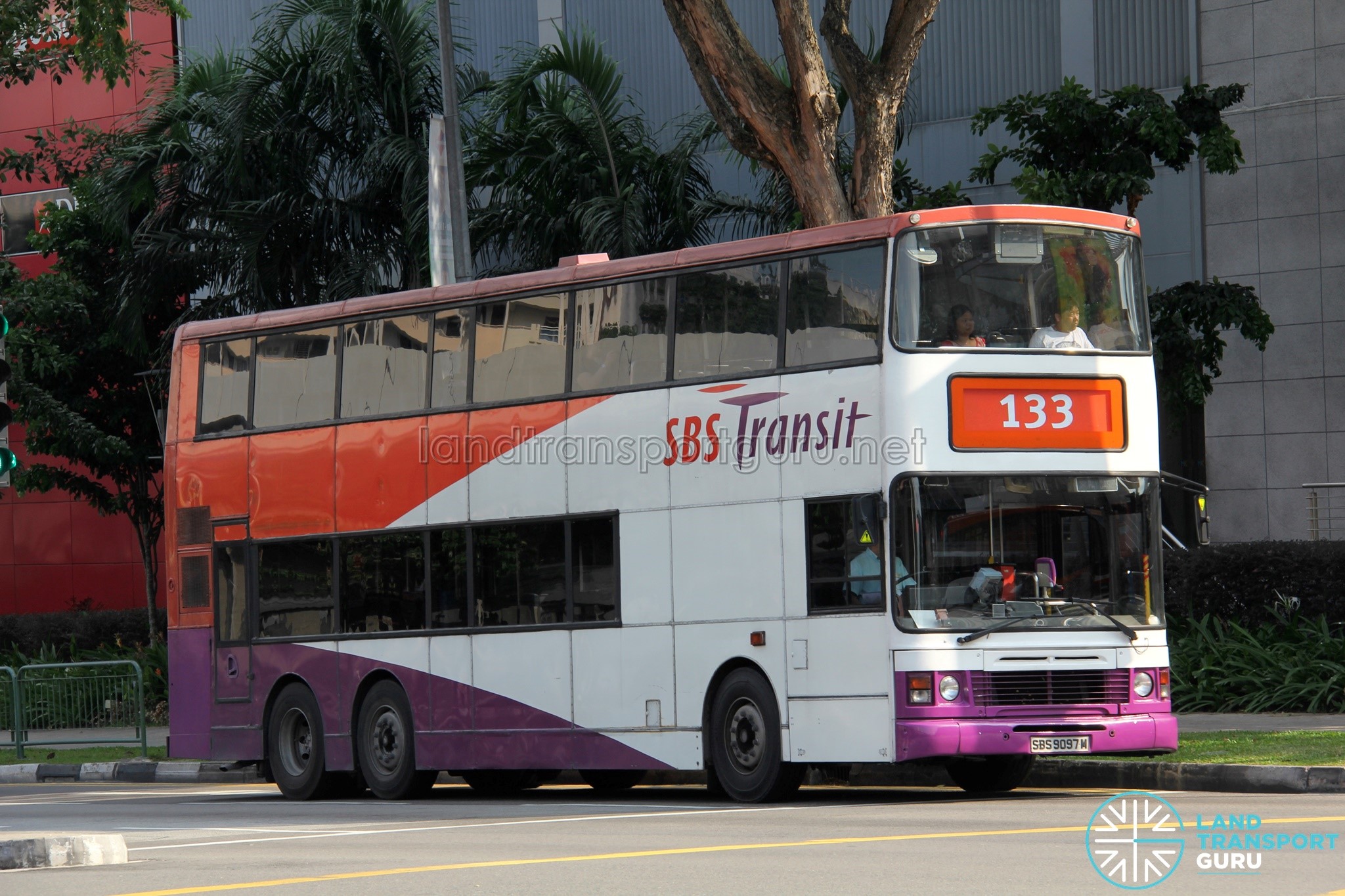
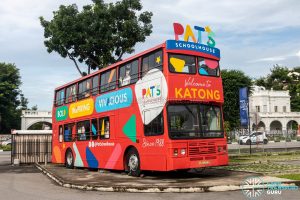
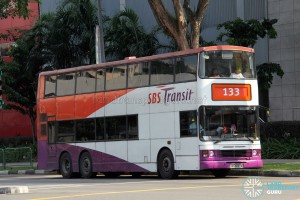

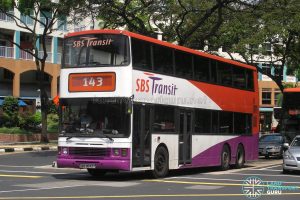

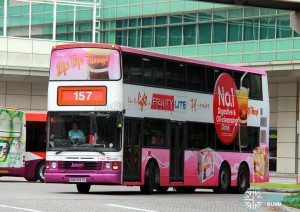

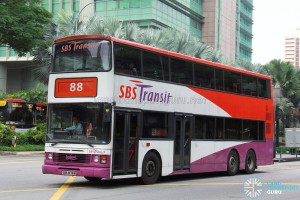

Now Pat’s Schoolhouse Jubilee Park has been Permanently Closed, and YL8508R was moved away from its static display site at 31 Jubilee Road.